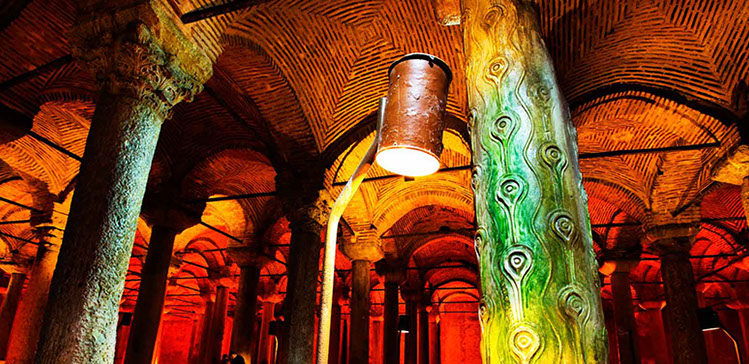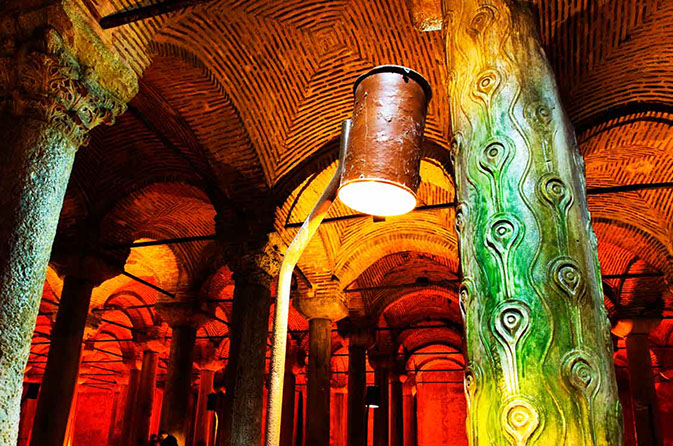
The Basilica Cistern (in Turkish, Yerebatan Sarayı "Submerged Palace", or Yerebatan Sarnıcı "Submerged Cistern") is the largest of the 60 ancient cisterns built under the city of Istanbul (formerly Byzantium and Constantinople) in Turkey during the Byzantine era. It is located one hundred meters to the southwest of the church of Santa Sofia, in the historical peninsula of Sarayburnu. It was built in a few months, in the year 532, during the reign of the Byzantine emperor Justinian I.
The name of this underground structure comes from a large public square in the Capitol of Constantinople, the Stoa of the Basilica, under which it was originally built (other sources indicate that it comes from a basilica built earlier on the same site). According to ancient historians, the emperor Constantine I the Great built a structure that was later reconstructed and enlarged by the Emperor Justinian after the disturbances of Niká in 532.

basilica cisterna
ORIGINS











